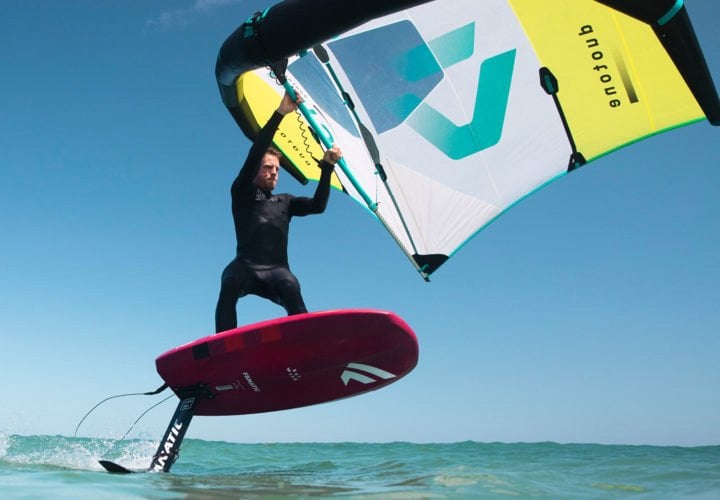In recent years, the world of surfing has witnessed a significant transformation with the advent of foil surfboards. These innovative boards have revolutionized the surfing experience in several aspects, setting them apart from traditional surfboards. In this article, we will delve into the key differences between foil surfboards and their traditional counterparts, highlighting their characteristics, advantages, disadvantages, costs, and more.
Design and Construction
Foil Surf Board
Foil surfboards, also known as hydrofoil surfboards, feature a unique design characterized by a hydrofoil attached to the bottom of the board. The hydrofoil consists of a mast and a wing, which creates lift as the board moves through the water. This lift raises the board above the surface, reducing drag and allowing for a smoother ride.
Traditional Surfboards
Traditional surfboards are typically crafted from foam and fiberglass, with a flat or slightly concave bottom. They rely on buoyancy and the rider's skill to stay afloat and catch waves.
Efficiency and Speed
Foil Surf Board
Foil surfboards are renowned for their exceptional efficiency and speed. The hydrofoil's lift eliminates much of the resistance encountered by traditional surfboards, enabling riders to glide effortlessly over the water's surface. They can reach speeds up to 25-30 miles per hour, enhancing the overall surfing experience.
Traditional Surfboards
Traditional surfboards rely on the wave's energy to propel them forward. While they provide an exciting ride, their speed is limited compared to foil surfboards, usually ranging from 10 to 15 miles per hour.
Cost
Foil Surf Board
Foil surfboards tend to be more expensive due to the precision engineering and materials required for the hydrofoil system. On average, a quality foil surfboard can cost between $1,500 and $3,000, making them a significant investment.
Traditional Surfboards
Traditional surfboards come in a wide range of prices, depending on factors such as size, materials, and brand. However, they generally cost less than foil surfboards, with beginner boards starting at around $200, while high-performance models can go up to $1,000.
Size and Specifications
Foil Surf Board
Foil surfboards are typically shorter and narrower than traditional surfboards. They have a specific size and weight requirement to optimize their hydrofoil's performance. Common foil surfboard lengths range from 4'6" to 6'6", with a width of 18-24 inches.
Traditional Surfboards
Traditional surfboards come in various shapes and sizes, catering to different skill levels and riding styles. They can range from 5'6" for shortboards to 9'0" or longer for longboards, with widths spanning from 20 to 24 inches.
Durability and Lifespan
Foil Surf Board
The durability of a foil surfboard largely depends on the quality of the materials used, but they are generally robust. With proper care, a foil surfboard can last for many years.
Traditional Surfboards
Traditional surfboards are also durable, with fiberglass construction designed to withstand the rigors of wave riding. Their lifespan can vary based on usage and maintenance but typically ranges from 5 to 10 years or more.
Age and Skill Level
Foil Surf Board
Foil surfboards are best suited for experienced surfers who have mastered the fundamentals of surfing. Due to their high speed and maneuverability, they can be challenging for beginners.
Traditional Surfboards
Traditional surfboards cater to surfers of all ages and skill levels, making them an excellent choice for beginners and seasoned riders alike.
Advantages and Disadvantages
Foil Surf Board
Advantages:
- Exceptional speed and efficiency
- Smooth and stable ride
- Ability to ride smaller waves
- Enhanced maneuverability
Disadvantages:
- Steeper learning curve
- Higher initial cost
- Limited availability of waves suitable for foiling

Traditional Surfboards
Advantages:
- Suitable for all skill levels
- Lower cost of entry
- Wide availability of surf spots
- Time-tested design and performance
Disadvantages:
- Limited speed compared to foil boards
- More physically demanding to paddle
- Less suitable for very small waves
In conclusion, foil surfboards represent a significant advancement in the world of surfing, offering unparalleled speed and efficiency at the cost of a steeper learning curve and higher initial investment. Traditional surfboards, on the other hand, continue to be popular among surfers of all levels due to their versatility and affordability. Ultimately, the choice between the two boils down to individual preferences, skill level, and the type of surfing experience one seeks.
For those interested in exploring foil surfboards further, you can check out the Foil C Board 140 to get a closer look at one of the leading foil surfboard options on the market.